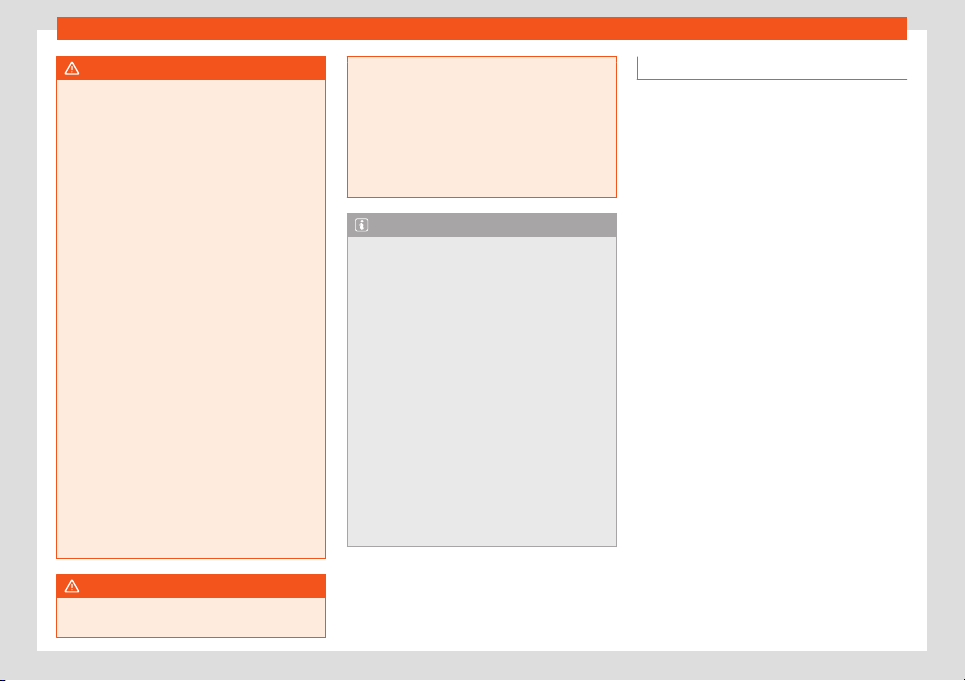Loading ...
Loading ...
Loading ...

Towing bracket device*
WARNING
Driving with a trailer and transporting
heavy or lar
ge objects can affect driving
properties and even cause an accident.
●
Always secure the load properly using
belts or straps that are suitable and in
good condition.
●
Adapt your speed and driving style at all
times to suit visibility, weather, road and
traffic conditions.
●
Trailers with a high centre of gravity are
more likely to overturn than those with a
low one.
●
Avoid sudden braking and manoeuvres.
●
Take great care when overtaking.
●
Reduce speed immediately if you notice
that the trailer is swaying, however slightly.
●
Never drive at more than 80 km/h
(50 mph) when towing a trailer (or at more
than 100 km/h (60 mph) in exceptional cir-
cumstances). This also applies in countries
where driving at higher speeds is permit-
ted. Take into account the speed limit for
vehicles with trailers in the corresponding
country, as it could be less than the speed
limit for vehicles without a trailer.
●
Never attempt to “straighten” the towing
vehicle and trailer while accelerating.
WARNING
If the towing bracket has been retrofitted
by a non-SEAT workshop
, the Start-Stop
system must be disconnected manually
whenev
er driving with a trailer. Otherwise
the brake system could be damaged and
could consequently cause a serious acci-
dent or injury.
●
Always disconnect the Start-Stop system
manually when using a towing bracket that
has not been fitted by a SEAT workshop.
Note
●
Bef
or
e hitching or unhitching a trailer, al-
ways deactivate the anti-theft alarm
›››
page 98. Otherwise, the tilt sensor could
cause the alarm to go off.
●
Do not drive with a trailer for the engine's
first 1000 km
›››
page 233.
●
SEAT recommends that, if possible, the
tow hook be removed or covered when it is
not going to be used. In the event of a rear-
end collision, the damage to the vehicle
could be greater if the tow hook is fitted.
●
Some retrofitted towing brackets cover
the rear towing eye. In these cases, the
towing eye should not be used for tow-
starting or for towing other vehicles. For
this reason, if the vehicle has been retrofit-
ted with a towing bracket, always keep the
tow hook in the vehicle when you remove it.
Technical requirements
Vehicles that are fact
ory-mounted with a
towing device meet all the technical and le-
gal requirements for driving with a trailer
›››
page 298.
If the vehicle is retrofitted with a towing
bracket, only a bracket that is authorised for
the maximum authorised load of the trailer
that is to be towed may be fitted. The towing
bracket must be suitable for the vehicle and
the trailer and must be properly secured to
the vehicle's chassis. Only use a towing
bracket that has been authorised by SEAT for
this vehicle. Always check and take into ac-
count the towing bracket manufacturer's in-
structions.
Towing bracket fitted on the bumper
Never fit a towing bracket to the bumper or to
the area where the bumper is mounted. The
towing bracket should not impair the bum-
per's function. Do not make modifications or
repairs to the exhaust system or the brake
system. Make regular checks to ensure that
the towing bracket is secure.
Engine cooling system
Driving with a trailer increases the load on the
engine and cooling system. The cooling sys-
tem should have sufficient coolant and be
prepared for the additional effort involved in
driving with a trailer.
»
293
Loading ...
Loading ...
Loading ...